No, I’m not having a stroke. I was just discovering the history of the Colorums (religious rebel organizations in the Philippines from the mid-19th to the mid-20th century) and came across this 1924 article in the Time magazine on the 25th anniversary of the proclamation of Aguinaldo’s “Philippine Republic”.
The unnamed author not only puts Philippine Republic in quotation marks but also makes a series of wild claims:
- Brands Jose Rizal as “a sort of Voltaire with a streak of Lenin”,
- Mistakenly labels Rizal “a co-dictator in the Katipunan”,
- Mercilessly butchers the Katipunan’s name as “Kalastansen, Kagalanagland Katipunan”, which supposedly translates to “the Supremely Perfect and Virtuous Union for Freedom” (instead of the actual Kataastaasang Kagalanggalangang Katipunan “Supreme and Venerable Association”),
- Claims its members are known as “Kalastrums”, with kalastrum supposedly meaning ‘supreme perfection’,
- Cites two supposed slogans of Katipunan: “Death to all foreigners” and “To freedom by the knife, the cord, and the poisoned spike”,
- Calls Aguinaldo “still technically a Colorum”,
- Equates the Colorums leading an uprising in Mindanao in 1924 with Katipunan.
Some Background
The word colorum (or kolorum) in the modern-day Philippines refers to illegally operated public utility vehicles — either without a valid permit or in violation of an issued permit (Pepe Alas. El Filipinismo (Mar 13, 2022). The origin of the word “colorum”).
It supposedly originated from the cult named Cofradía de San José (Brotherhood of Saint Joseph), which was established in the 1830s in the province of Tayabas (now Quezon) by Apolinario de la Cruz, who became known as Hermano Pulé and at some point was hailed as the “king of the Tagalogs”.
Mixing the catholic liturgy with elements of traditional religions, the group held masses in the caves on Mt. Banahaw, Laguna, which would often end with the per omnia sæcula sæculorum ‘through all the ages of ages’, borrowed from traditional catholic prayers in Latin. Supposedly, after a while colorum became the name of the group (and its members) as a result of their mispronunciation of the phrase. Persecution of the group by the Spanish authorities ended with a quelled insurrection in 1841.
Many more such societies — secret and not — were established in various parts of the Philippines in the 1920s-30s and came to be known as colorum. Although unrelated, the common idea behind them was fighting against social injustice (often primarily manifested as the violent mistreatment by the Philippine Constabulary) and for independence of the country. Religious eclecticism and indigenization are another well-known common feature of these groups. For instance, Jose Rizal was often believed to be a resurrected god who would lead the people into the bright future (Milagros C. Guerrero (1967). The Colorum Uprisings: 1924–1931. Asian Studies).
The colorum tradition is also a sustained one. The town of Socorro in Surigao, burned in 1924 to quell one of the colorum uprisings, hit the headlines in 2023 as home of another religious organization: Socorro Bayanihan Services, Inc. led by Señor Agila, who is now in detention charged for human trafficking, kidnapping, and illegal detention, together with other members (John Sitchon (Oct 5, 2023). A brief history of Socorro Bayanihan Services Incorporated | Rappler).
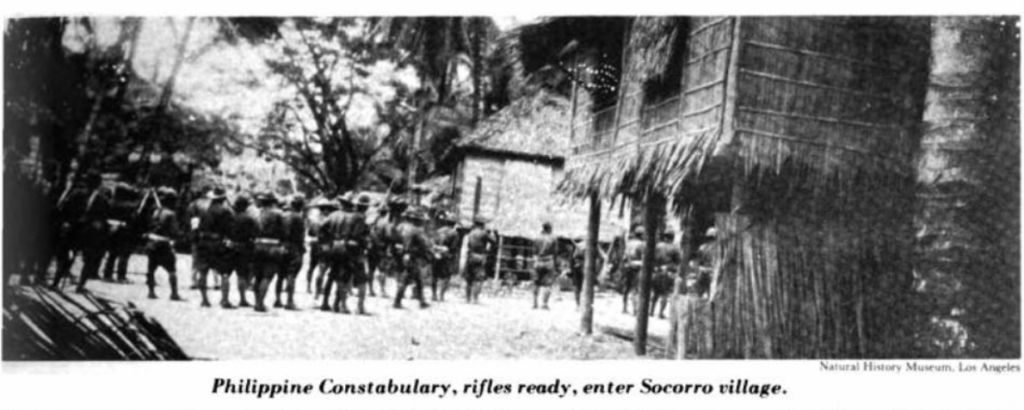
The illegal status of these colorum groups is allegedly what gave rise to the modern use of the word as something illegal or unlicensed.
So, I was actually just looking for some definitive evidence to support the commonly repeated etymology of colorum as a Latin corruption, when I came across the Time article mentioned above.
Colorum, Kalastrum, KuKlux Klan — Who Cares?
However amusing the rest of the list is, the “Death to all foreigners” slogan was what really caught my attention. Its exact source is unclear, but it appears as the name of an alleged Katipunan apron in a 1907 issue of the vile racist newspaper The Prairie Farmer. There, Stanley Waterloo refers to Katipunan as a still existing organization, calling it “the most powerful and most effective secret organization of modern times.”
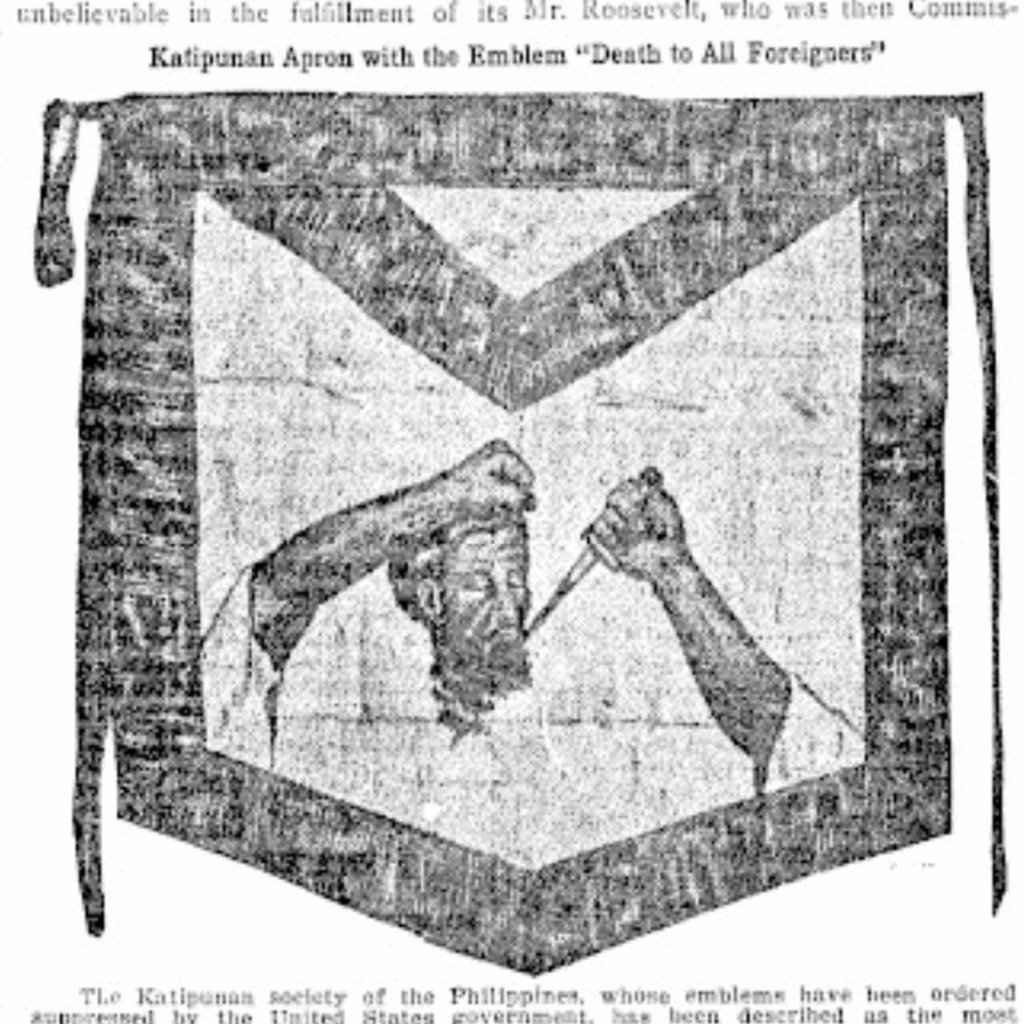
Waterloo also whines about the freshly elected Philippine Assembly and its likely support for independence:
“Well, the people of the Philippines have voted, the assembly has been elected and the result has been to show that water does not rise above its level.”
“But the result of the election is another demonstration that a people’s intelligence cannot be manufactured in a day.”
Yet, the Katipunan to him is a far more dangerous organization:
“It belongs to the same class as the Mafia, the Kuklux Klan, and the Molly Maguires, and has ruled the natives through terrorism.”
The apron with a cut-off head and a dagger was, in fact, a 9th-degree Masonic apron and had nothing to do with the far right.
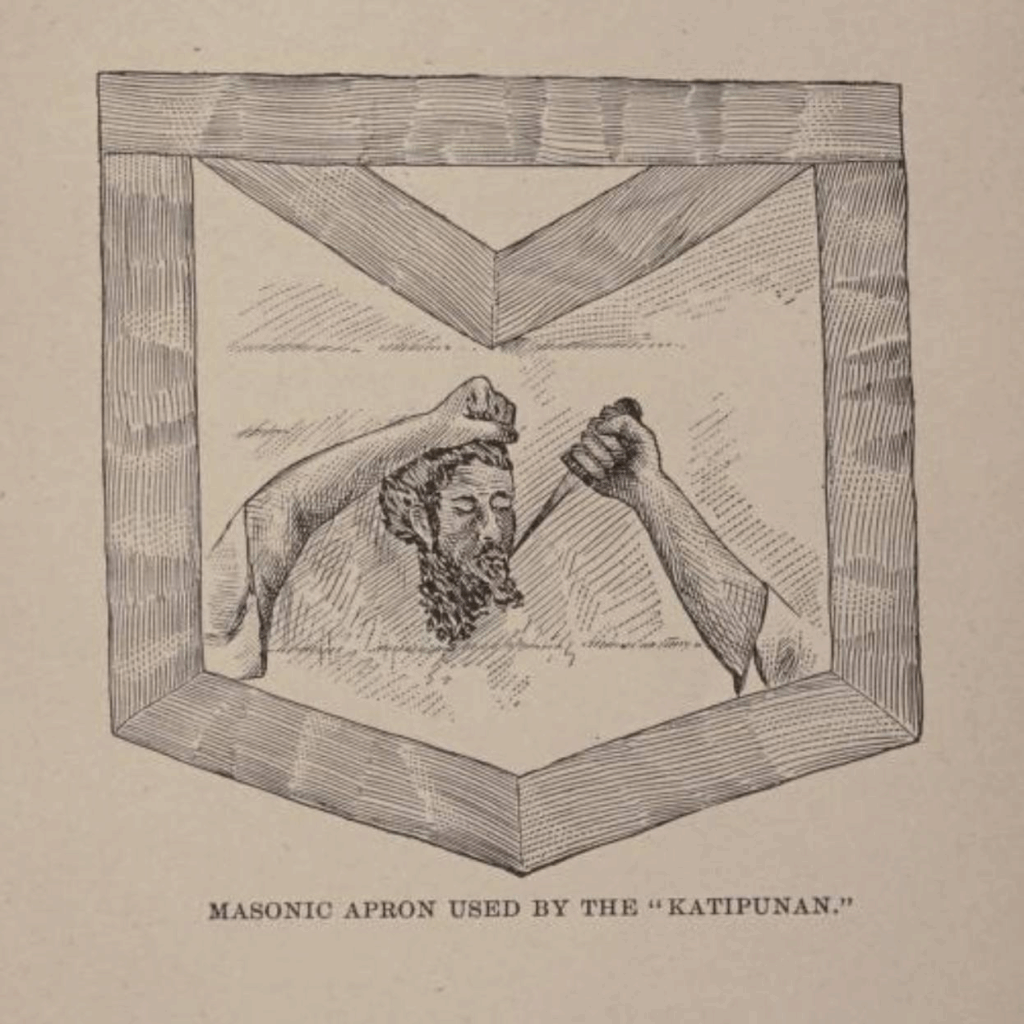
The fear-mongering about natives seeking to kill all Europeans in the country was reportedly a common device of the Spanish colonial propaganda:
“Danger to Europeans, “Massacre of all white people,” was a frequent Spanish allegation in political disturbances, but the only proof ever given (the 9th degree Masonic apron stupidly attributed to the Katipunan in 1896) was absurd and irrelevant.”
At first, I thought Kalastansen Kagalanagland was just a mistake resulting from digitization of the text. But it appears again in a 1931 piece by Rev. Albert Muntsch of the Jesuit St. Louis University in Missouri, published in The Fortnightly Review. He also repeats the claim that there is a Tagalog word kalastrum (he calls it a “Tagol” word and also refers to “native Tagolos”) meaning ‘perfection’ and that colorum is an American corruption of that word (there is no word kalastrum in Tagalog).
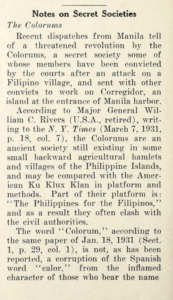
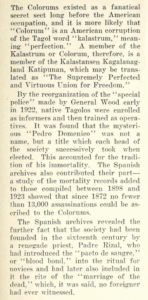
This butchered version of the Katipunan’s name also appears in a 1924 issue of the Quebecois newspaper La Presse. The ignorance is so remarkable that it’s worth translating the full piece from French:
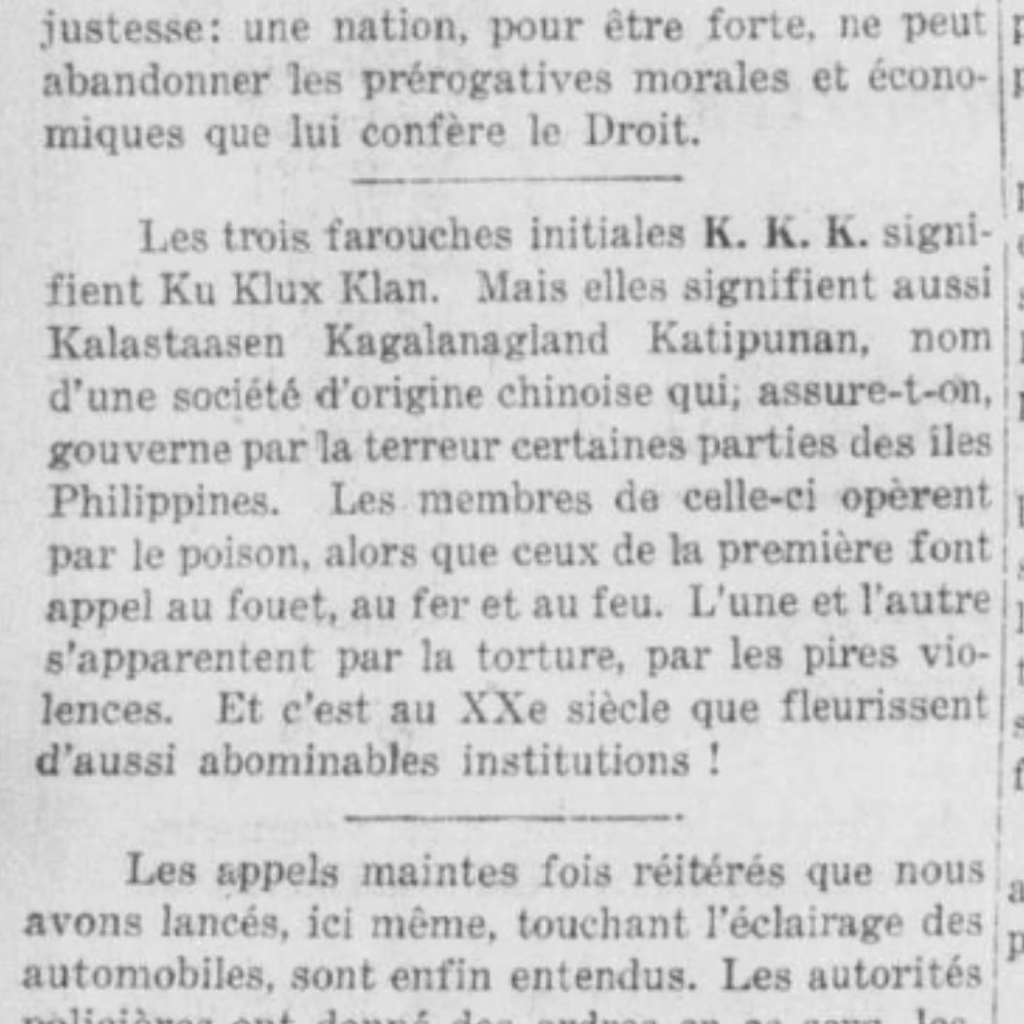
“The three fearsome initials K.K.K. stand for Ku Klux Klan. But they also stand for Kalastaasen Kagalanagland Katipunan, the name of a society of Chinese origin which, it is said, rules certain parts of the Philippine islands through terror. The members of this group operate by poison, while those of the former resort to the whip, to fire and sword. Both are alike in their use of torture and the worst kinds of violence. And it is in the 20th century that such abominable institutions flourish!”
It’s probably impossible to tell where the intentional anti-Filipino disinformation ends and ignorant indifference begins here. But now I am wondering: was the Katipunan ever referred to by the Spanish as Colorum?
Of course, there was a tendency for American-era sources to lump all revolutionaries and subversive and millenarian organizations under the same category as “highway robbers, or brigands” — completely officially under 1902 Act No. 518 (An Act Defining Highway Robbery or Brigandage, and Providing for the Punishment Therefor) and 1904 Act No. 1121 (An Act Amending Acts Numbered Five Hundred and Eighteen and Seven Hundred and Eighty-One So As More Fully To Define the Crime of Bridandage, and Providing Punishment for the Failure of Municipal Officials to Perform Their Duty in That Respect).
This was clearly a continuation of what the Spaniards did, calling everyone engaged in an armed struggle against them as tulisan, ladrones, or filibusteros. Akin to how modern dictatorships label everyone opposed to them as extremists/terrorists.
But how historically far-fetched would it be to trace all Philippine rebel organizations — Colorum, Katipunan, Sakdalistas, Huks, NPA — to the same tradition of insurrection?
What a rabbit hole.
Etymology
But going back to the etymology of colorum. As of now, I didn’t manage to find any 19th century source online that would offer the per omnia sæcula sæculorum origin of colorum (which doesn’t necessarily mean it does not exist).
The earliest use of colorum in print that I found is the 1899 Declaracion, Carta y Proclama by Isabelo Artacho (a member of the Malolos Congress known for co-authoring the Biak-na-Bato Constitution and for filing a suit against General Aguinaldo in Hong Kong seeking the distribution among the insurrectionists of the insurrection fund held by the general).

It was also common to refer to rebel groups as colorum around 1908 — long before the 1920s uprisings, as evidenced by this Philippine Commission report and the satirical periodical Lipang Kalabaw.

The earliest use of colorum referring to illegally operating public transport that I found online is from the 1930 Bureau of Public Works Bulletin:

Interestingly, multiple authors mention that when this semantic shift happened, colorum came to mean anything illegal (see, for example, Renato Constantino’s 1975 A History of the Philippines or Guerrero’s 1967 The Colorum Uprisings: 1924 -1931 article, where he claimed that colorum was at the time “used to signify any unlicensed property, particularly firearms”). It is so indeed, but in terms of frequency, it is by far much harder to find an instance of colorum used to refer to anything other than vehicles.

(Tribal Forum (1983))
A 1973 decree by Ferdinand Marcos, who had already declared martial law by then, might be the first instance of colorum entering the official language of laws and decrees. In it, colorum is mentioned together with another illegal scheme — kabit, — which involves informal franchise subcontracting.
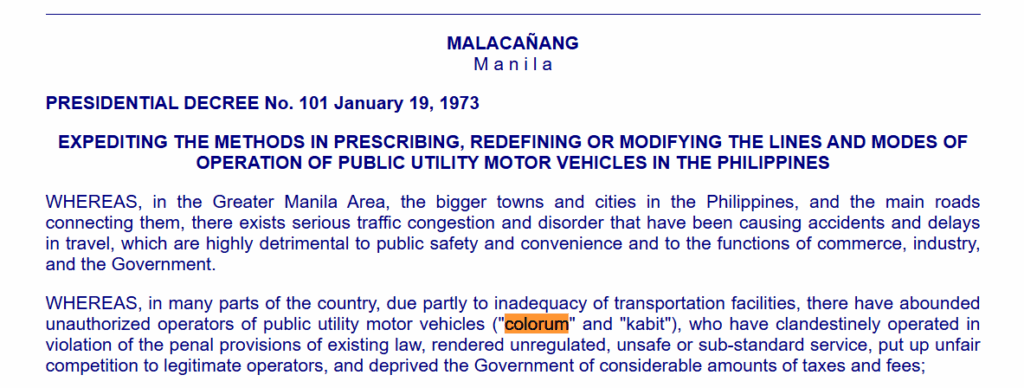
These days, official memoranda speak of stuff like TCV (Target Colorum Vehicle) and AEO (Anti-Colorum Enforcement Officer), without even elaborating what colorum stands for.
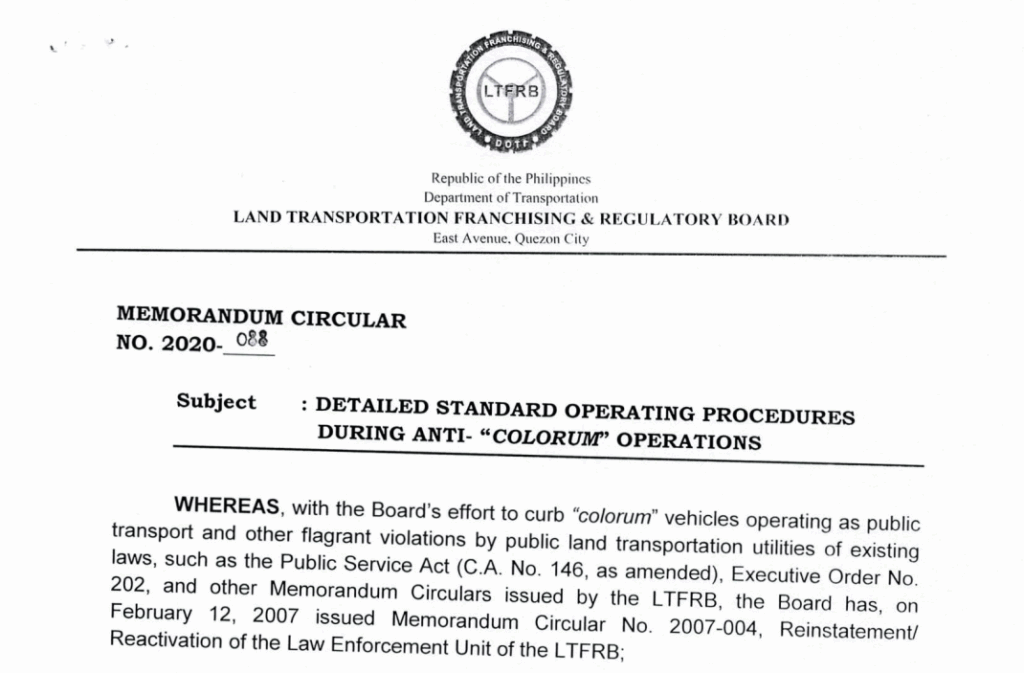
It’s amazing to see what sort of nonsense was spread about Filipino revolutionaries a hundred years ago. All these Kalastansen, kalastrum, KuKlux Klan comparisons. Colorum has nothing to do with any of this, but I still don’t fully understand its history.
Did the word already appear with the original Cofradia led by Hermano Pulé until 1841?
Or did it only come to life in the 1870s during the revival of Cofradia?
Or was it a later coinage around the time of the revolution?
And if it indeed came from the Latin per omnia sæcula sæculorum ‘through all the ages of ages’, is there a source from the time of its birth confirming this?
And what rebel group was the last one to be referred to as colorum?
But all these questions aside, colorum is one of the few words that I find ultimately Filipino. It does not belong to Tagalog alone, or any other individual Philippine language. It’s not a Spanish or English borrowing. It’s a corruption of a Latin phrase (allegedly) that arose specifically in the Philippine context, found only in the Philippines, has evolved in meaning, and persists to this day.
It sort of reflects the history of the country in its path from anti-colonial struggles before a Filipino identity even existed to post-colonial societal challenges — caused by Filipinos for Filipinos.




Leave a Reply